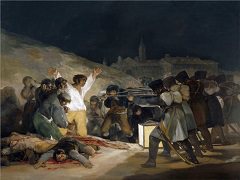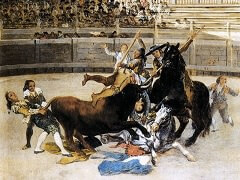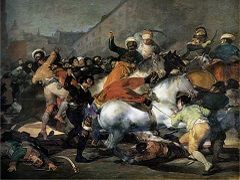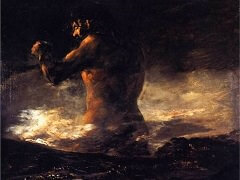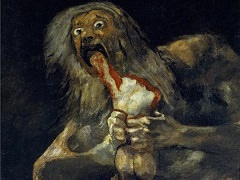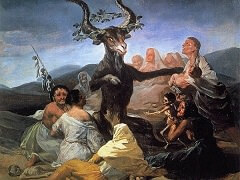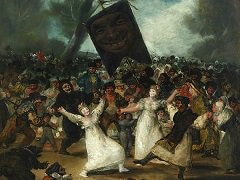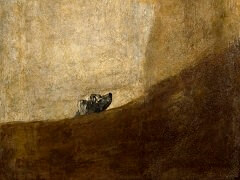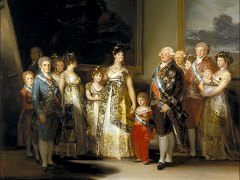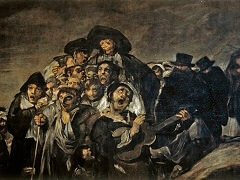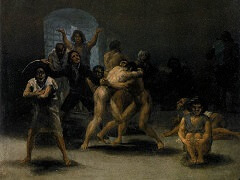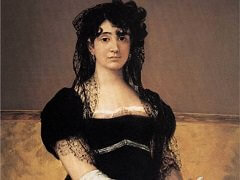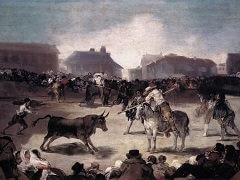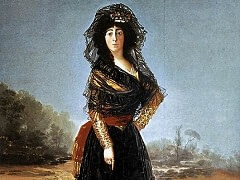Clothed Maja, 1800-1805 by Francisco Goya
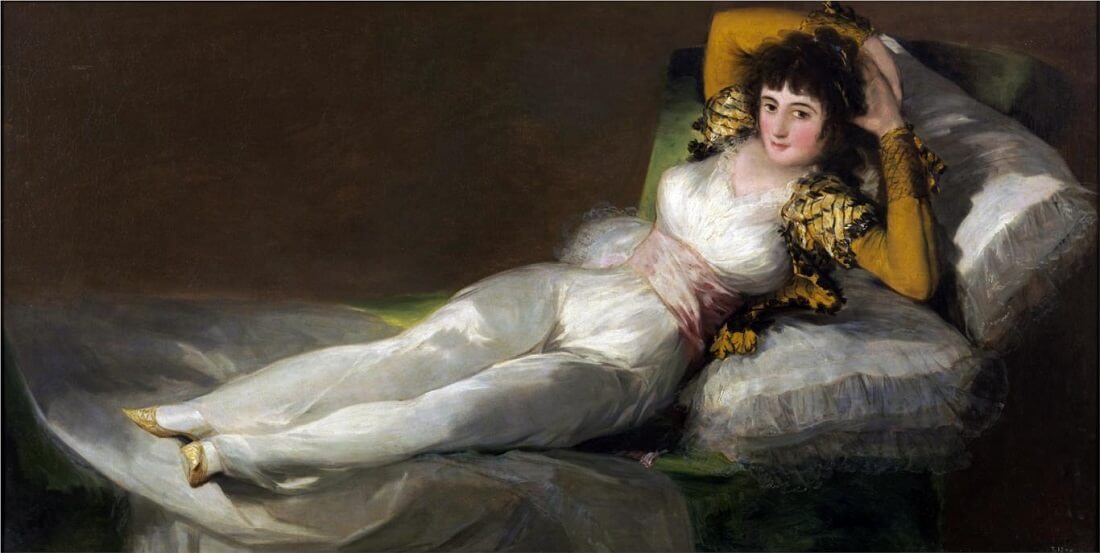
Since the early nineteenth century the Maja Vestida has been paired with the Maja Vestida, the latter painted before 1800, when Pedro Gonzalez de Sepulveda mentions it after his visit to Prime Minister Manuel Godoy's palace. No mention is made of the Maja Vestida, which led Elias Tormo to conclude, in 1902, that this canvas dates from a later period. Although the source of the commission is unknown, the work is thought to have been executed between 1800 and 1805, when the painter's professional ties to Godoy ended. The Maja Vestida is first cited in an 1808 inventory, carried out after the Prince of Peace (Godoy) fell from grace and his assets were seized by Ferdinand VII. Under the French occupation, Joseph Bonaparte commanded his agent Frederic Quilliet to inventory all Godoy's holdings. Quilliet classified both majas in the third section of his inventory as works of secondary nature: his take on the subject agrees with Sepulveda's criticism of the Maja Vestida: "ill drawn and clumsy in coloration."
The moment the paintings came to light, scholars strove to confirm that the duchess of Alba was their model. French authors in particularLouis Viardot and Charles Baudelaire, for instanceendorsed this tale, believing the image to be that of an aristocrat dressed as an Andalusian maja, then considered the perfect incarnation of Spain and the soul of majismo. But close observation reveals inaccuracies of dress that have little to do with any known Andalusian attire, even that of a maja. Like the Maja Vestida, this clothed one reclines on a divan, her hands crossed behind her head, and looks out at the observer. Although she is called a maja, she is not wearing the characteristic attire of women of this plebeian class, whom Goya frequently drew or painted and of whose dress he possessed very precise knowledge. She displays neither the traditional basquina nor the usual hair arrangement: she wears neither hair netting nor mantilla. Her body is clothed in a white chemise, cinched at the waist by a broad sash. The little jacket she wears is not the characteristic jubon, the bodice seen on the maja in the foreground of The Meadow of San Isidro, but rather a different item of clothing loosely based on it. Her shoes have pointed toes, better suited to a lady than a maja; the majas preferred square-toed shoes with silver buckles. Given these discrepancies, it is worth noting that early commentators on the painting did not see in the model a maja at all, but rather a "Clothed Venus" or a "Gypsy": the painting is so listed in the 1813 inventory of Godoy's assets ordered by Ferdinand VII. In a recently published document from the General Register of Attachments of 22 November 1814, both majas are classed with "five obscene paintings," a classification that failed to prevent the exhibition of the Maja Vestida (as it did the Maja Vestida) in the halls of the Real Academia de Bellas Artes de San Fernando, which had the canvases in its keeping from 1836 until 1901.
The Maja Vestida and the Maja Vestida mark two technical extremes. The former is defined by exact and finished brushstrokes, and the painter indulged in a brilliantly executed tonal gradation, stressing the subtleties of the surfaces. The Maja Vestida, by contrast, reveals abrupt brushstrokes that seem in constant motion. Here strong colors summarily describe the flashy jerkin and the green of the divan, in no way a literal copy of the earlier couch, in which Goya highlighted the velvet textures. Space in the Maja Vestida is flat. The painter dispenses with the diffuse background lighting that clearly evokes surrounding areas in the Maja Vestida. The delicious laces and fabrics have likewise been modified and simplified. These might well arouse the envy of the Maja Vestida, reclining as she does on a less elegant and less opulent piece of furniture,

